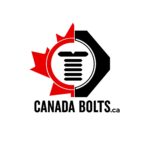In the world of construction, automotive repair, manufacturing, and mechanical assembly, washers are essential components that often go unnoticed. These small discs serve crucial roles in distributing load, preventing damage to surfaces, and maintaining the integrity of fastened joints. However, not all washers are created equal, and one of the most important distinctions to understand is the difference between imperial washers and metric washers. Choosing the right type isn’t just a matter of preference—it can affect performance, safety, and compatibility across your entire project.
In this article, we’ll explore the key differences between metric and imperial washers, help you understand when to use each, and outline the risks of mixing the two systems. Whether you’re a seasoned contractor or an amateur DIYer, having a firm grasp of washer standards is vital to doing the job right.
What Are Washers, and Why Do Standards Matter?
Before diving into the differences, it’s helpful to understand what washers do. Washers are thin, typically round metal or plastic components used under bolt heads or nuts. They serve to:
-
Distribute loads to prevent damage to materials
-
Reduce friction during tightening
-
Prevent loosening due to vibration (especially lock washers)
-
Protect surfaces from abrasion
Standards like imperial and metric define not only the inner and outer diameters of these washers but also their thickness, material grades, and tolerances. Using the wrong standard can lead to poor fit, uneven stress distribution, and long-term structural issues.
What Are Imperial Washers?
Imperial washers are measured in inches and are widely used in North America. They are designed to work with bolts, screws, and nuts that follow imperial sizing standards—commonly denoted in fractions like 1/4″, 3/8″, 1/2″, etc.
For example:
-
A 1/2″ imperial washer is meant to fit over a 1/2″ bolt.
-
The outer diameter and thickness are standardized according to organizations like the American National Standards Institute (ANSI).
Imperial washers are most common in:
-
U.S. and Canadian construction
-
Older or legacy machinery
-
Automotive and aerospace applications rooted in U.S. manufacturing
What Are Metric Washers?
Metric washers, on the other hand, follow the International System of Units (SI) and are measured in millimeters. A washer labeled M10 is meant to pair with a 10 mm bolt. These washers follow standards like:
-
DIN (Deutsches Institut für Normung – Germany)
-
ISO (International Organization for Standardization)
-
JIS (Japanese Industrial Standards)
Metric washers are the norm in:
-
European and Asian markets
-
Modern international manufacturing
-
Any application where metric fasteners are used
Key Differences Between Metric and Imperial Washers
Let’s break down the differences across various parameters:
1. Size and Fit
-
Imperial washers are sized based on inch-based fasteners. Their inner diameters match fractional bolt sizes (e.g., 1/4″, 3/8″).
-
Metric washers are sized by millimeter-based fasteners (e.g., M6, M8, M10).
👉 Important: A 10 mm metric washer won’t fit snugly on a 3/8″ bolt, and vice versa. Using the wrong washer can result in a loose or sloppy connection.
2. Outer Diameter and Thickness
-
Metric washers often have thinner profiles and larger outer diameters for the same inner diameter when compared to imperial washers.
-
For instance, a DIN 125 M10 washer may differ in OD and thickness from an ANSI 1/4″ flat washer.
This affects load distribution and tension balance in the joint.
3. Standardization and Codes
-
Imperial washers use ANSI/ASME B18.22.1 standards in North America.
-
Metric washers follow ISO 7089/7090, DIN 125, or other relevant codes.
Knowing which standard is specified in a blueprint or equipment manual ensures proper compliance.
4. Availability
-
In the U.S. and Canada, imperial washers are widely stocked and easily sourced.
-
In Europe and Asia, metric washers dominate the market.
This can influence sourcing decisions and lead times for international projects.
Risks of Mixing Metric and Imperial Washers
Mixing metric and imperial washers with incompatible fasteners is a recipe for failure. Here’s why:
➤ Improper Fit
A washer that’s slightly too large will not center properly around the bolt, leading to uneven stress distribution.
➤ Slippage and Loosening
When the washer doesn’t match the fastener, the contact area between the washer and the bolt/nut is reduced, increasing the likelihood of slippage and loosening under vibration.
➤ Damage to Components
In applications with soft materials like aluminum or plastic, an ill-fitting washer can cause surface damage or embed unevenly, creating weak points.
➤ Non-Compliance
Many industries (aerospace, automotive, and civil engineering) have strict standards. Using the wrong washer type can result in inspection failures or voided warranties.
When to Use Imperial Washers
You should opt for imperial washers in these scenarios:
-
Working with fasteners labeled in inches (e.g., 3/8″, 1/2″)
-
Maintaining or repairing older U.S.-made equipment
-
Operating in the North American construction or manufacturing sector
-
Following blueprints or manuals that reference ANSI or imperial measurements
Tip: Always double-check bolt dimensions. If the bolt is imperial, so should the washer and nut be.
When to Use Metric Washers
Metric washers are your go-to when:
-
Working on modern international machinery
-
Using fasteners labeled as M5, M6, M10, etc.
-
Following DIN, ISO, or JIS standards
-
Collaborating with suppliers or contractors outside North America
Many global industries have moved toward metric for standardization and efficiency.
How to Choose the Right Washer for Your Project
Choosing the correct washer requires more than just knowing the measurement system. Consider the following:
-
Washer Type: Flat, spring, lock, fender, sealing, etc.
-
Material: Stainless steel, zinc-coated, brass, nylon
-
Environmental Conditions: Corrosion resistance, temperature, vibration
-
Load Requirements: Thicker washers for heavier loads
-
Standard: Match all fasteners and washers within a system

